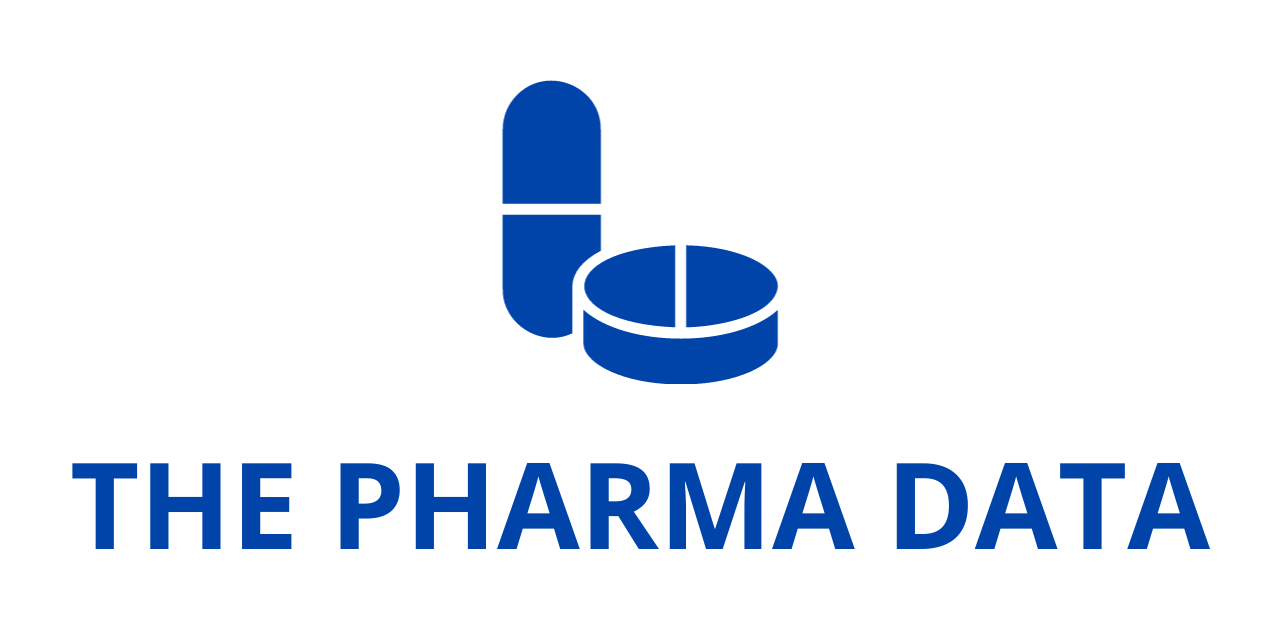
Merck Secures Dual Positive CHMP Opinions for KEYTRUDA® in Europe: Subcutaneous Administration and New Head & Neck Cancer Indication
Merck (NYSE: MRK), known as MSD outside of the United States and Canada, announced a major regulatory milestone in Europe as the Committee for Medicinal Products for Human Use (CHMP) of the European Medicines Agency (EMA) adopted two positive opinions for its blockbuster anti-PD-1 therapy, KEYTRUDA® (pembrolizumab). These endorsements mark an important step in expanding both the routes of administration and the therapeutic reach of the drug across oncology.
The first positive opinion supports the approval of a subcutaneous (SC) formulation of KEYTRUDA, which would be marketed in the European Union (EU) as KEYTRUDA SC™. This version introduces a more patient-friendly and time-efficient delivery method, representing a significant evolution from the existing intravenous (IV) administration.
The second CHMP opinion recommends approval of KEYTRUDA as a perioperative treatment for patients with locally advanced head and neck squamous cell carcinoma (LA-HNSCC), covering both neoadjuvant and adjuvant use in combination with radiation therapy (with or without cisplatin). This would establish KEYTRUDA as the first perioperative anti-PD-1 option for resectable LA-HNSCC in Europe.
Both recommendations will now be forwarded to the European Commission (EC) for final review, with a decision anticipated in the fourth quarter of 2025. If approved, the opinions would extend KEYTRUDA’s already wide-ranging clinical footprint, reinforcing its central role in cancer immunotherapy.
Merck’s Strategic Perspective: Innovation Beyond Intravenous Delivery
Announcing the CHMP’s favorable stance, Dr. Marjorie Green, senior vice president and head of oncology, global clinical development at Merck Research Laboratories, emphasized the company’s broader vision:
“Building on the legacy of KEYTRUDA, we are committed to driving innovation in cancer care with new routes of administration and indications in difficult-to-treat and earlier stages of cancer. This is a significant step forward in our pursuit of bringing this therapy to more patients. If approved, we believe KEYTRUDA SC has the potential to provide meaningful benefits to patients and providers in Europe because it can offer a shorter administration time compared to KEYTRUDA and the option to receive treatment in additional health care settings.”
Her statement highlights two critical priorities for Merck: expanding accessibility and improving the patient experience. While efficacy remains paramount, the convenience of treatment delivery increasingly plays a pivotal role in how cancer therapies are integrated into real-world practice.
The First CHMP Opinion: Subcutaneous Administration of KEYTRUDA
Faster, More Convenient Administration
The CHMP has recommended approval of KEYTRUDA SC as a subcutaneous injection administered by a healthcare provider. If authorized, patients could receive treatment:
- 395 mg every three weeks (administered in about one minute)
- 790 mg every six weeks (administered in about two minutes)
This marks a dramatic reduction compared to the 30–60 minutes typically required for IV infusion, allowing more flexible treatment schedules and enabling delivery in a broader range of healthcare environments beyond infusion centers.

The subcutaneous formulation contains both pembrolizumab and berahyaluronidase alfa, a recombinant human hyaluronidase variant developed by Alteogen Inc. The enzyme facilitates faster and more efficient dispersion of the monoclonal antibody under the skin, making the streamlined injection possible.
Broad Scope of Application
Importantly, the CHMP’s positive opinion covers all currently approved indications of KEYTRUDA in adult patients in Europe, Merck meaning that the SC formulation could potentially replace IV delivery across multiple cancer types, from lung cancer to melanoma to renal cell carcinoma. This universality magnifies its potential impact on both healthcare systems and patients.
Clinical Evidence: The 3475A-D77 Trial
The Merck regulatory submission is supported by results from the pivotal 3475A-D77 trial, which directly compared SC pembrolizumab with the established IV regimen.
- The trial enrolled patients with treatment-naïve metastatic non-small cell lung cancer (NSCLC) without EGFR, ALK, or ROS1 genomic aberrations.
- Both forms of pembrolizumab were administered with chemotherapy.
- The study’s primary focus was pharmacokinetic comparability, ensuring that drug absorption and exposure levels were consistent between the two delivery methods.
Key findings included:
- Comparable exposure levels between SC and IV pembrolizumab.
- Consistent efficacy signals, with secondary endpoints showing:
- Objective Response Rate (ORR): 45.4% (95% CI, 39.1–51.8) for SC + chemotherapy
- ORR: 42.1% (95% CI, 33.3–51.2) for IV + chemotherapy
- Progression-Free Survival (PFS) was also consistent across both arms.
Results were presented at the European Lung Cancer Congress (ELCC) 2025 in March and simultaneously published in Annals of Oncology.
Global Regulatory Pathway
Merck is pursuing worldwide approvals of KEYTRUDA SC:
- In the United States, a Biologics License Application (BLA) is under FDA review, covering all solid tumor indications previously approved for KEYTRUDA.
- A decision is expected by September 23, 2025, the PDUFA target date.
If Merck approved, KEYTRUDA SC could reshape oncology treatment delivery globally, not just in Europe.
The Second CHMP Opinion: Expanding into Perioperative Head & Neck Cancer
Addressing a High-Need Population
The second CHMP positive opinion recommends KEYTRUDA for the perioperative treatment of resectable locally advanced head and neck squamous cell carcinoma (LA-HNSCC). This includes:
- Neoadjuvant treatment (before surgery)
- Adjuvant treatment (after surgery) in combination with radiation therapy, with or without cisplatin
- Subsequent monotherapy in eligible patients
Approval would establish KEYTRUDA as the first perioperative anti-PD-1 therapy for this patient group in Europe.
Clinical Evidence: The KEYNOTE-689 Trial
The Merck recommendation is based on the pivotal Phase 3 KEYNOTE-689 trial, which assessed KEYTRUDA in combination with standard therapies against current adjuvant care.
At the first interim analysis:
- The KEYTRUDA-based perioperative regimen achieved a statistically significant and clinically meaningful improvement in event-free survival (EFS).
- The benefit was observed in patients with tumors expressing PD-L1 with a Combined Positive Score (CPS) ≥1, the trial’s target population.
These Merck results positioned KEYTRUDA as a transformative option for patients facing an aggressive and historically hard-to-treat cancer.
Publication and Regulatory Context
- Data were first presented at the American Association for Cancer Research (AACR) Annual Meeting in April 2025.
- Full trial results were subsequently published in The New England Journal of Medicine (June 2025), underscoring the scientific rigor of the findings.
- In June 2025, the U.S. Food and Drug Administration (FDA) approved KEYTRUDA for this same perioperative LA-HNSCC indication, providing a strong precedent for EU adoption.
Why These CHMP Opinions Matter
For Patients
- Convenience and comfort: Subcutaneous injections reduce treatment burden, particularly for elderly or frail patients.
- Broader treatment access: SC administration enables delivery outside specialized oncology centers, potentially improving reach in rural or resource-limited areas.
- Expanded survival benefits: For head and neck cancer patients, a perioperative approach offers the possibility of improved outcomes in earlier disease stages, where cure rates are higher.
For Healthcare Systems
- Efficiency gains: Shortened administration time frees infusion chairs and nursing resources, addressing Merck capacity challenges in busy oncology clinics.
- Cost management: Reduced infrastructure demands may help contain healthcare costs while improving throughput.
- Standard-of-care evolution: Regulatory acceptance of perioperative immunotherapy could shift treatment paradigms in head and neck cancer.
For Merck
- Sustained market leadership: KEYTRUDA already dominates the checkpoint inhibitor class. These expansions reinforce its competitive edge against rivals like nivolumab (Opdivo) and atezolizumab (Tecentriq).
- Lifecycle management: With KEYTRUDA’s primary patents beginning to face expirations later this decade, diversifying formulations and indications is a strategic imperative.
- Global momentum: Dual CHMP opinions align with U.S. regulatory progress, underscoring a coordinated strategy to maximize KEYTRUDA’s commercial and clinical potential.
European Commission Review
The CHMP’s recommendations now advance to the European Commission (EC), which will issue final marketing authorization decisions applicable across all EU member states, as well as Iceland, Liechtenstein, and Norway.
Final outcomes are expected by Q4 2025. Given the strength of supporting data and the precedents set in the U.S., analysts widely expect approvals to follow.
If confirmed, Merck will gain:
- A new formulation (KEYTRUDA SC) applicable across multiple cancers.
- A new indication in perioperative head and neck cancer, positioning KEYTRUDA earlier in the treatment pathway.
Together, these milestones represent a broadening of KEYTRUDA’s reach in both delivery method and disease spectrum, further cementing its status as a cornerstone of modern oncology.
Merck’s announcement of dual CHMP positive opinions for KEYTRUDA underscores the therapy’s enduring impact on oncology nearly a decade after its initial launch. By advancing both a patient-friendly subcutaneous formulation and a first-of-its-kind perioperative indication in head and neck cancer, Merck is simultaneously addressing quality-of-life concerns, healthcare system efficiency, and clinical efficacy in earlier-stage disease.
With European Commission decisions on the horizon and U.S. regulatory reviews underway, 2025 may prove to be a pivotal year for KEYTRUDA’s global expansion. These developments highlight how incremental innovation—through new formulations, delivery methods, and earlier interventions—can extend the influence of established cancer therapies well beyond their initial boundaries.





